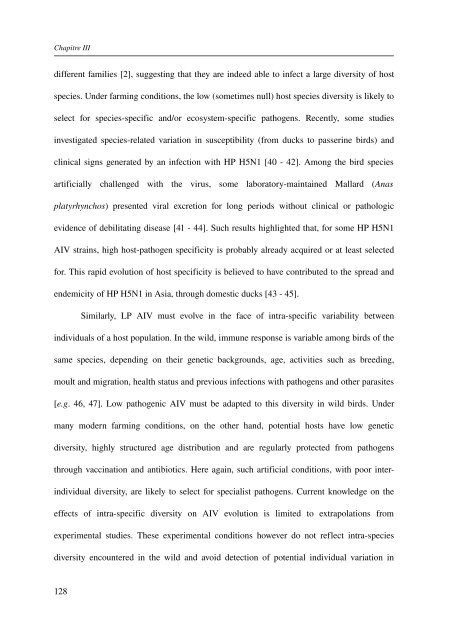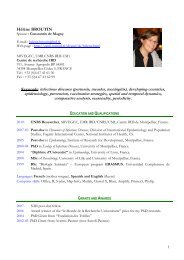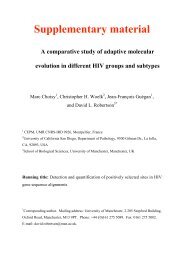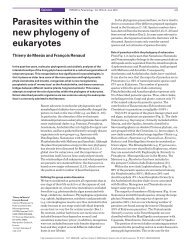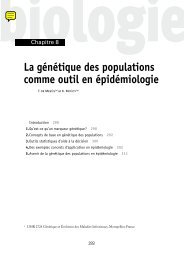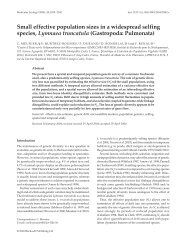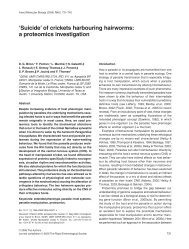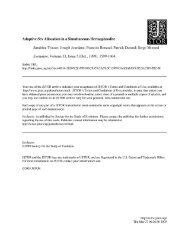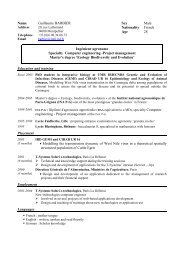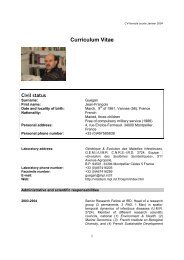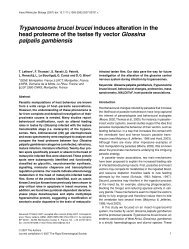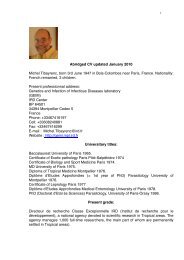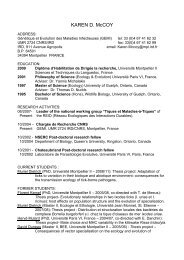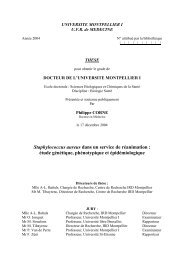écologie des virus influenza aviaires en Camargue - IRD
écologie des virus influenza aviaires en Camargue - IRD
écologie des virus influenza aviaires en Camargue - IRD
You also want an ePaper? Increase the reach of your titles
YUMPU automatically turns print PDFs into web optimized ePapers that Google loves.
Chapitre IIIdiffer<strong>en</strong>t families [2], suggesting that they are indeed able to infect a large diversity of hostspecies. Under farming conditions, the low (sometimes null) host species diversity is likely toselect for speciesspecific and/or ecosystemspecific pathog<strong>en</strong>s. Rec<strong>en</strong>tly, some studiesinvestigated speciesrelated variation in susceptibility (from ducks to passerine birds) andclinical signs g<strong>en</strong>erated by an infection with HP H5N1 [40 42]. Among the bird speciesartificially chall<strong>en</strong>ged with the <strong>virus</strong>, some laboratorymaintained Mallard (Anasplatyrhynchos) pres<strong>en</strong>ted viral excretion for long periods without clinical or pathologicevid<strong>en</strong>ce of debilitating disease [41 44]. Such results highlighted that, for some HP H5N1AIV strains, high hostpathog<strong>en</strong> specificity is probably already acquired or at least selectedfor. This rapid evolution of host specificity is believed to have contributed to the spread and<strong>en</strong>demicity of HP H5N1 in Asia, through domestic ducks [43 45].Similarly, LP AIV must evolve in the face of intraspecific variability betwe<strong>en</strong>individuals of a host population. In the wild, immune response is variable among birds of thesame species, dep<strong>en</strong>ding on their g<strong>en</strong>etic backgrounds, age, activities such as breeding,moult and migration, health status and previous infections with pathog<strong>en</strong>s and other parasites[e.g. 46, 47]. Low pathog<strong>en</strong>ic AIV must be adapted to this diversity in wild birds. Undermany modern farming conditions, on the other hand, pot<strong>en</strong>tial hosts have low g<strong>en</strong>eticdiversity, highly structured age distribution and are regularly protected from pathog<strong>en</strong>sthrough vaccination and antibiotics. Here again, such artificial conditions, with poor interindividualdiversity, are likely to select for specialist pathog<strong>en</strong>s. Curr<strong>en</strong>t knowledge on theeffects of intraspecific diversity on AIV evolution is limited to extrapolations fromexperim<strong>en</strong>tal studies. These experim<strong>en</strong>tal conditions however do not reflect intraspeciesdiversity <strong>en</strong>countered in the wild and avoid detection of pot<strong>en</strong>tial individual variation in128


